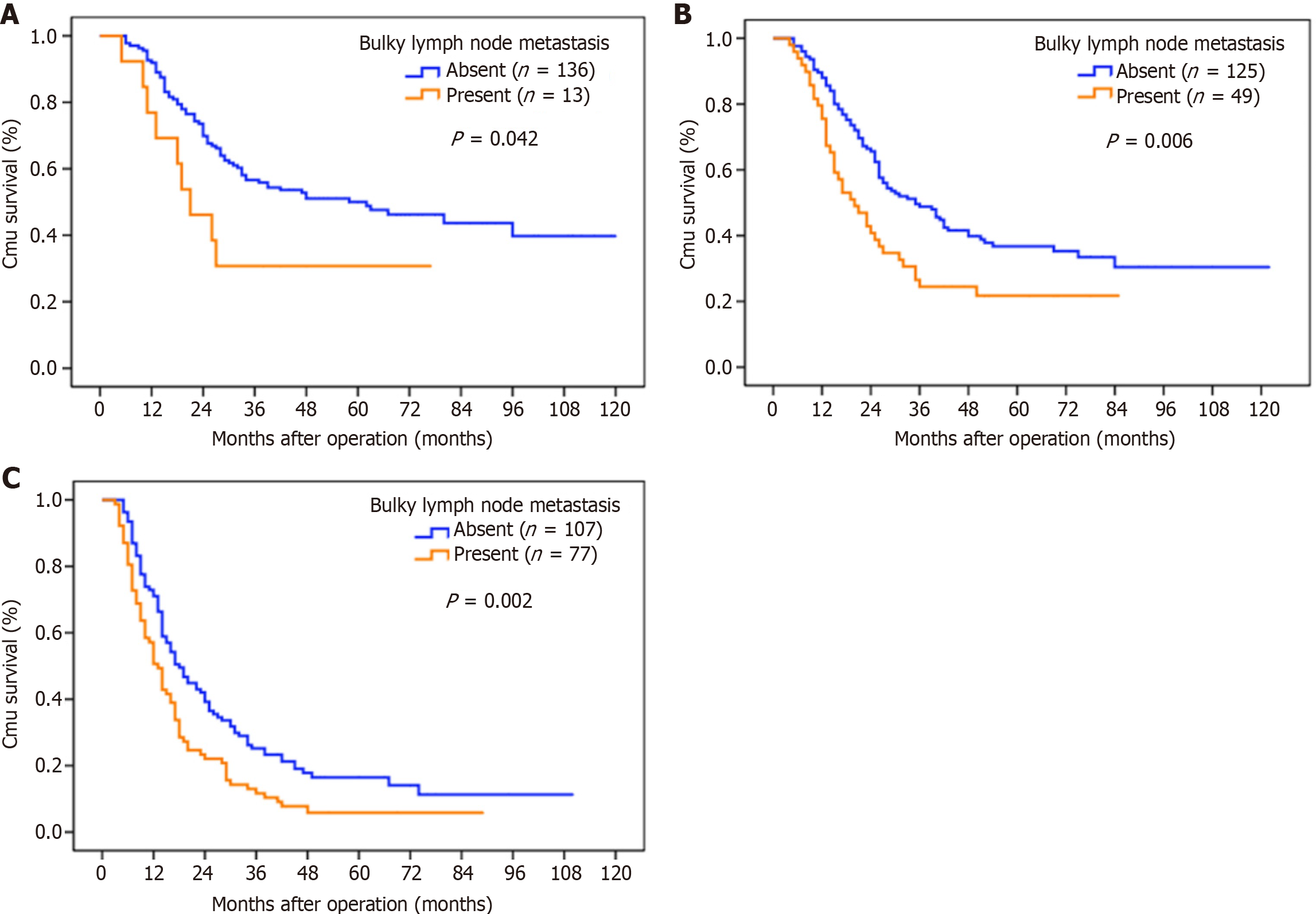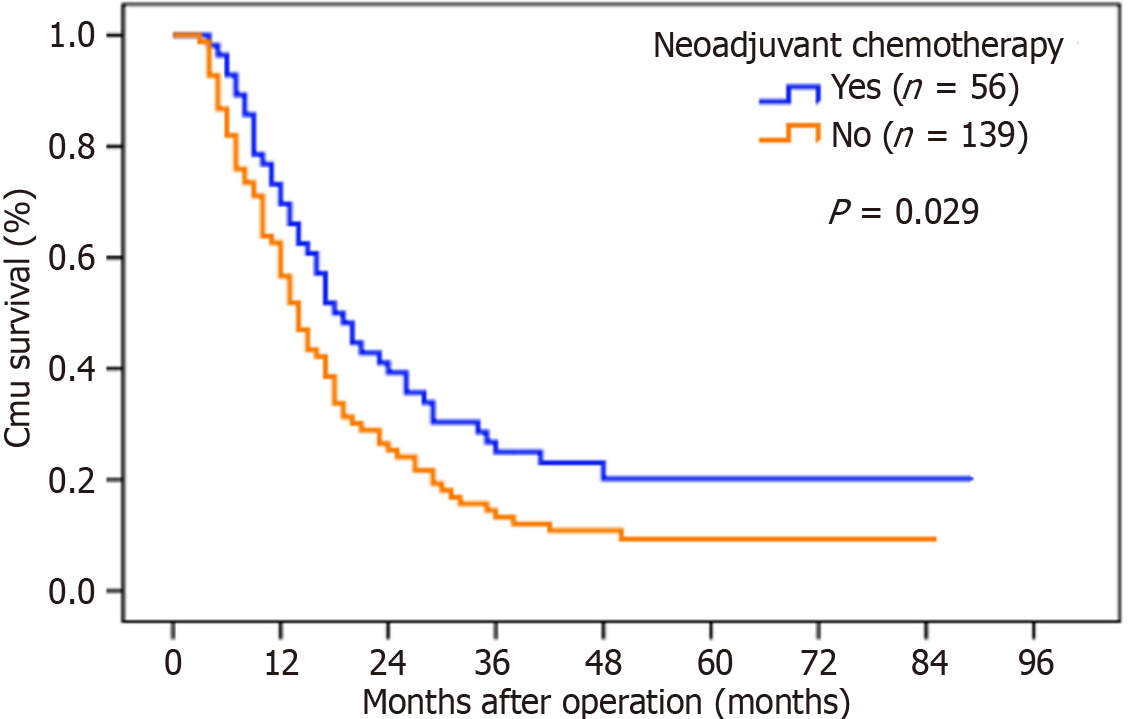Copyright
©The Author(s) 2025.
World J Clin Oncol. Jun 24, 2025; 16(6): 106228
Published online Jun 24, 2025. doi: 10.5306/wjco.v16.i6.106228
Published online Jun 24, 2025. doi: 10.5306/wjco.v16.i6.106228
Figure 1 Kaplan–Meier estimates of overall survival in patients with gastric cancer after curative resection according to the status of swollen lymph node metastasis.
A: Overall survival (OS) curve for all patients: The 5-year OS rates were 136% and 35.8% for patients with swollen lymph node metastasis (SLNM) and those without, respectively (P < 0.001); B: OS curve for matched patients: The 5-year OS rates were 134% and 21.2% for patients with SLNM and those without, respectively (P = 0.006).
Figure 2 Overall survival curve stratified by N stage.
A: N1 stage; B: N2 stage; C: N3 stage. The survival differences were only observed in gastric cancer patients with N1, N2, and N3 stage.
Figure 3 Survival curves of patients with swollen lymph node metastasis.
Patients who received neoadjuvant chemotherapy had a significantly higher overall survival (OS) rate (5-year OS: 20.2% vs 9.3%, P = 0.029) and longer median survival time (18.0 months vs 14.0 months, P = 0.029) than those who did not.
- Citation: Cui JL, Zhao K, Li XL, Wang F, Yang YS, Zheng X. Swollen lymph node metastasis and survival in gastric cancer: Multi-institutional post-resection analysis. World J Clin Oncol 2025; 16(6): 106228
- URL: https://www.wjgnet.com/2218-4333/full/v16/i6/106228.htm
- DOI: https://dx.doi.org/10.5306/wjco.v16.i6.106228















